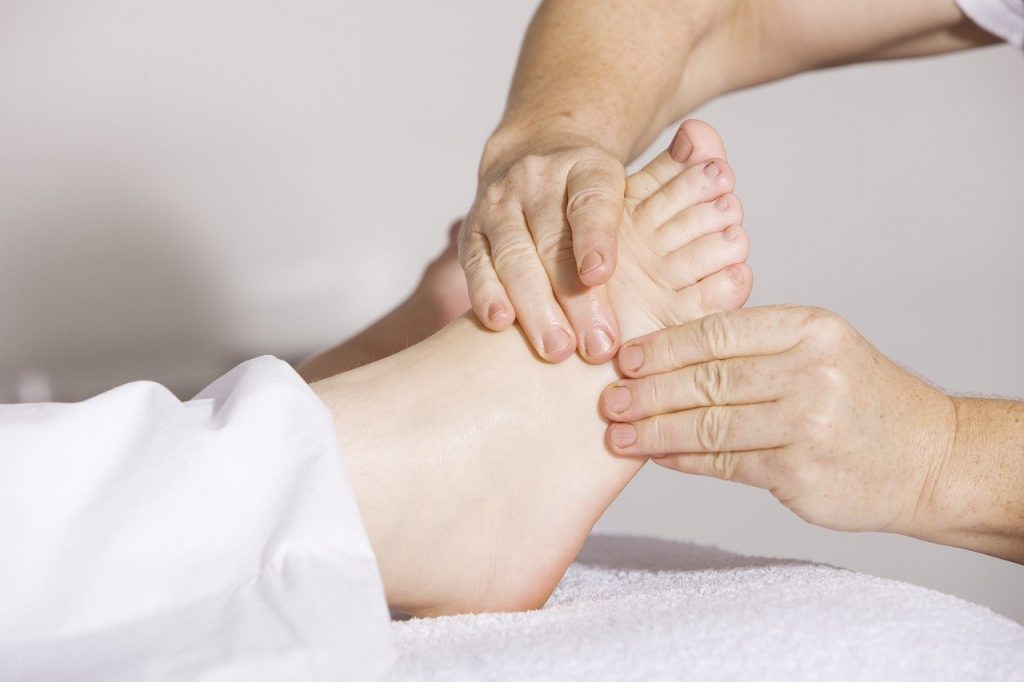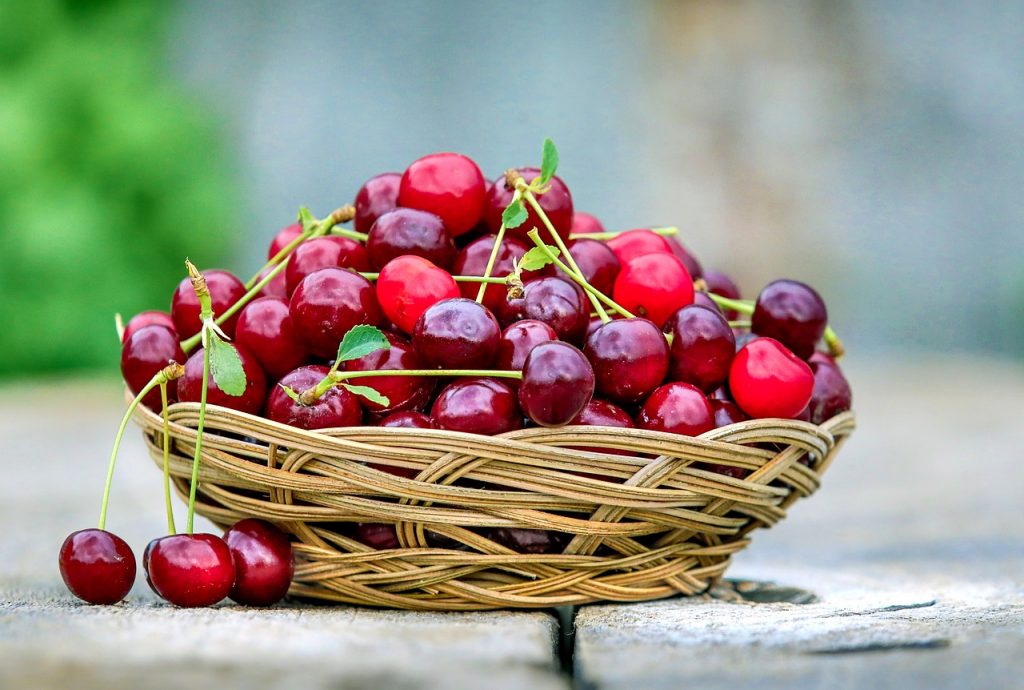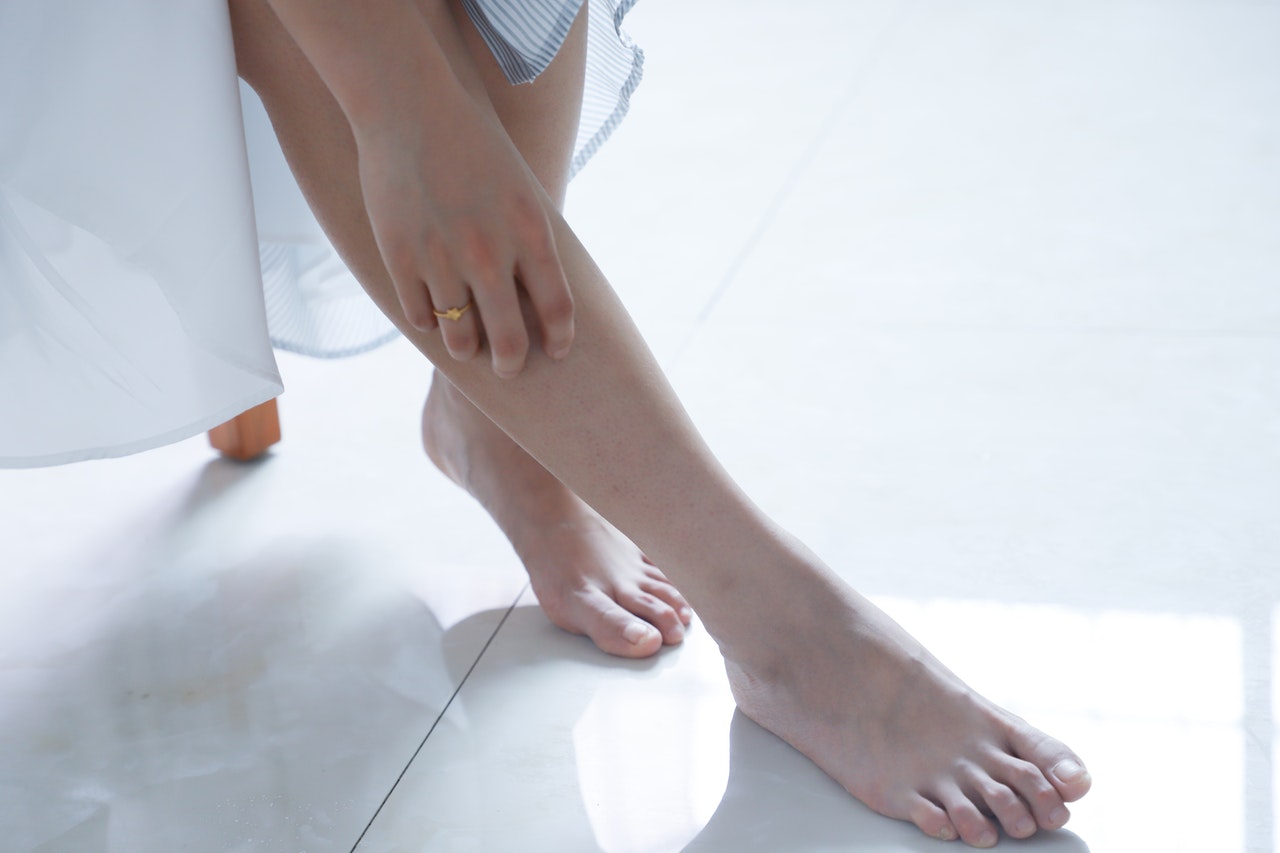Gout is a disease caused by high levels of uric acidA natural compound from purine metabolism; not typically add... in the blood. It was once called “the disease of the rich” or “the disease of kings”, because the appearance of gout is related with a diet rich in meat, carbohydrates, and fats. Today we know that gout can affect almost anyone. What are the factors that contribute to the development of gout? How can you manage it? What is the best diet to follow if you have gout? Find out more by reading our article.
Gout – what is it?
Gout is a rheumatic disease characterised by severe pain and inflammation and deformation of the joints. The main cause is elevated levels of uric acid in the blood (hyperuricemia). Gout most often affects the joint of the big toe but it can also affect other joints, like the elbow, knee, or shoulder joint.
How does gout begin? As explained by Arthritis Australia, “Small crystals form in and around the joint, causing inflammation, pain and swelling. These crystals are made of one of the body’s normal waste products, uric acid. Normally the body rids itself of extra uric acid through the kidneys into the urine. However this does not happen fast enough in people with gout. This causes uric acid levels to build up and the crystals to form.”
How do I know if I suffer from gout?
According to the Australian Institute of Health and Welfare, gout can either be episodic or chronic. At first, the disease is asymptomatic – it can only be detected by examining uric acid levels. At a later stage, the person can experience very severe pain in the affected joint, usually at night. This can last for several hours and is a result of lower body temperatures. Swelling and redness can be visible, and the skin over the diseased joint will be tight and shiny. These symptoms can sometimes last for days and weeks, followed by periods with no symptoms.
Gout can turn into a chronic disease in which the affected joint becomes deformed. As a result of sodium urate crystal deposits in various parts of the body, tophus are formed (most often around the joints of the hands or feet, in the ears, or in internal organs).
What does a gout attack look like?
An attack of gout develops as a result of large fluctuations in the concentration of uric acid in the synovial fluid. Immediate factors that can trigger an attack include: physical exertion, alcohol, food that contains a significant amount of purine compounds, surgery, trauma, and certain medications.
In the course of a gout attack, redness and swelling appear in the affected joint and pain gradually increases to reach its apogee after about 8–12 hours. If a gout attack is not treated it can last anywhere from several hours to a week or two.
Australians and gout
Data from the Australian Bureau of Statistics 2017-18 National Health Survey showed that around 0.8% of Australians suffer from gout. Gout affects men more than women, with males making up 87% of people suffering from gout.

What causes gout?
Increased levels of uric acid in the blood are due to reduced kidney function. Gout also occurs as a result of improper diet: 12% of cases are caused by eating too many products rich in purines, which are chemical compounds responsible for the formation of uric acid. These can be found in fructose-sweetened drinks, seafood and meat. Alcohol can also contribute to the development of gout.
Gout may also result from a genetic predisposition. People with Lesch-Nyhan syndrome, suffering from partial or complete deficiency of the enzyme responsible for controlling uric acid levels, often also struggle with arthritis. Additionally, patients who have recently had surgery, suffer from dehydration or infection, or have other serious illnesses are more at risk of developing gout.
There are also some lifestyle factors which can increase the risk of developing gout, including:
- Being overweight or obese,
- Having high cholesterol, high blood pressure, or glucose intolerance,
- Having kidney disease,
- Taking diuretics (tablets that drain water from the body).
=> Check out more about how to avoid too much cholesterol in your diet <=
Foods that you should avoid when suffering from gout
Gout can be treated by a change of lifestyle and adopting an appropriate diet. The disease is often developed by consuming foods rich in the aforementioned purines. For this reason, a low-purine diet is recommended for patients with gout.
To prevent recurrence of the disease, it is advisable to limit high purine content foods. Here are the list of the foods high in purine that you should avoid when suffering from gout.
Yeast
Yeast is one of the ingredients that should be avoided by people with gout. This doesn’t just mean not eating certain breads, but also not drinking beer. Beer contains both alcohol and yeast, both of which can cause progression of gout.
Organ meats
Certain parts of animal products e.g. the liver, kidneys, or brains, may contain large amounts of folate, protein, iron, and Vitamin B12, but they’re also very high in purine. Eating organ meats can raise uric acid levels, which then build up in the joints and cause painful gout symptoms.
Mushrooms
These are a great source of antioxidants, folate, and magnesium and taste great with sauces and soups – not to mention amazing on the pizza. But unfortunately, mushrooms are high in purines so are not recommended for someone suffering from gout.
Alcohol
Excessive consumption of alcoholic beverages can cause a sudden onset of gout. Beer and wine are rich in purines, which are responsible for the production of large amounts of uric acid in the body. As much as 73ml of uric acid is produced from just 200ml of beer. This acid accumulates in the body and, under the right conditions, can lead to the development of gout.
Many spirits, such as vodka, do not contain purine, however they should also be avoided. First of all, any type of alcohol puts a burden on the kidneys, which are already under a lot of pressure and not functioning correctly when suffering from gout.
Secondly, all alcohol dehydrates the body. In turn, loss of water increases uric acid levels in the blood and other tissues. So while most alcoholic drinks lack purines, they can still trigger a gout attack.
Seafood
We have bad news for anyone who loves eating fish and seafood, as virtually all have a medium or high purine content. About 90% of fresh fish contain over 100mg of purines per 100g. The biggest culprits are sardines and striped tuna, with 200mg of purines per 100g. Most other seafoods contain more than 150mg of purine compounds per 100g, including shrimps, clams, lobsters, dried fish (e.g. anchovies), and smoked or canned fish.
People suffering from gout are advised to limit their purine intake to 400mg per day. A small, palm-sized fish fillet can provide half (or more!) of this amount. It seems reasonable, therefore, to reduce your consumption of fish or choose ones with the lowest amounts of purine.
Venison
This is a great source of protein, zinc, and the Vitamin B group, but venison has also large amounts of purine. It should definitely be avoided when suffering from gout.
Coffee
Drinking coffee is one of the most problematic dietary issues when it comes to gout. Most consider single origin coffee something that should be excluded from the daily menu of anyone suffering from gout, as it is rich in purines. At the same time, however, it turns out that coffee can also lower uric acid levels in the blood by catalysing various metabolic changes in the body. If you suffer from gout, the decision whether or not to drink coffee should take into account your individual condition and needs of your body, the stage of the disease, medical opinion, etc.
Bone extracts
We all love a bowl full of hearty bone broth, but if you want to avoid purines you should limit the amount of bone extracts in our diet.
Spinach
Recommended by many dieticians as a great sauce of iron and other valuable nutrients, spinach is not the best choice to fight the gout as it is also high in purines.
Foods to include in low-purine diet
Gout requires some kind of dietary restrictions. Firstly, you need to avoid the products mentioned in the previous section as they are risk factors for the disease. In addition, you should introduce to your diet foods that reduce the risk of gout. If you suffer from gout, you must avoid fried foods and introduce foods that have been baked or cooked without the addition of fat (e.g. steamed or boiled). You should also have your last meal of the day about 4-5 hours before going to bed. This is because more uric acid is retained in the body at night, which is a completely natural mechanism.
There are some foods that you can eat with no problems as they are low purine. Check out the following food products that contain less than 50mg of purine compounds per 100g:
Fruits
They’re tasty, beautiful, and full of healthy goodness. Eating fruit gives the body large amounts of fibre, which is extremely important for good health (=> learn more about fibre in your diet <=). Additionally, fruits are a great source of vitamins and healthy minerals.
If you suffer from gout, you should add many fruits to your diet. Fruit with low levels of purine include: cherries, pears, apples, red currants, raspberries, kiwi, oranges, strawberries, peaches, plums, grapes, apricots, melon, banana, and avocado.

Vegetables
We should all be eating at least 6 servings of vegetables each day, as they give us all the important nutrients to keep our body healthy. If you want to reduce the amount of purine in your diet, you should eat lots of tomatoes, cucumbers, lettuce, onion, zucchini, radish, potatoes, carrots, green olives, pumpkin, kale, Chinese cabbage, corn, garlic, chives, and sweet potatoes.
Eggs
These are a great source of protein and calcium. This perfect breakfast ingredient can be a part of a low-purine diet, and it doesn’t have to be only chicken eggs either. You can also try duck or quail eggs.
Dairy products
If you aren’t lactose intolerant, you can enjoy dairy products. They are a great source of calcium, vitamin B12, and zinc. Luckily, any dairy product contains less than 50mg of purines in 100g, so you can continue to enjoy them in your diet. Try hard cheese, blue cheese, milk, curdled milk, natural yoghurt, natural kefir, natural buttermilk. Remember though, that most cheeses are high in calories.
Cereal products
Rice, pasta, and other cereal products are an important source of energy, carbohydrate, protein, and fibre. They can also be a part of a low-purine diet. So if you suffer from gout, you can still eat: wheat bread, light and dark pasta, wheat bread flour, light and dark rice, coarse and fine groats, and cereals.
Fats
When it comes to oils, you can include some olive oil and vegetable oil in your diet as they don’t contain large amounts of purine.
Things to remember when experiencing gout
Gout can be very problematic and painful. That’s why it’s important to follow the right diet and lifestyle. Changing your diet is not easy, however, if it can improve your health and stop the disease, then it is definitely worth it.
Check out some helpful tips regarding life with gout:
- Drink enough water. When you drink around 6-8 glasses a day, it will dilute uric acid in the blood.
- Eat cherries. Try to eat around 225-250g of cherries every day. There is some scientific evidence for the effectiveness of cherries in fighting gout.
- Drink celery juice. This is another home remedy for gout that is very popular in Australia. Celery seed drinks are just as effective.
- Try acupuncture. One study found that in patients undergoing acupuncture treatments for one month, the decrease in uric acid and other markers of gout was greater than in the control group. Scientists have concluded that acupuncture also helps prevent kidney damage that is a complication of gout.
- Take supplements. Fish oils, vitamins E, C and B vitamins (especially folic acid) are helpful for gout. Suggested daily doses: 1-3g of Vitamin C; 1200-1800 IU vitamin E; balanced B-complex containing 25 mg of vitamin B5; niacinamide (from 900 mg to 4 g daily in several doses, but only under the supervision of a doctor, as high concentrations can lead to glucose intolerance and liver damage.
- Visit a homeopath. One study found that individually selected homeopathic remedies help to control arthritic symptoms better than conventional anti-inflammatory drugs alone.



I’ve tried acupuncture and it sure does something to your body but I don’t think it significantly lessen the effects of gout. If you want to relieve the symptoms of gout, start having a healthier lifestyle.